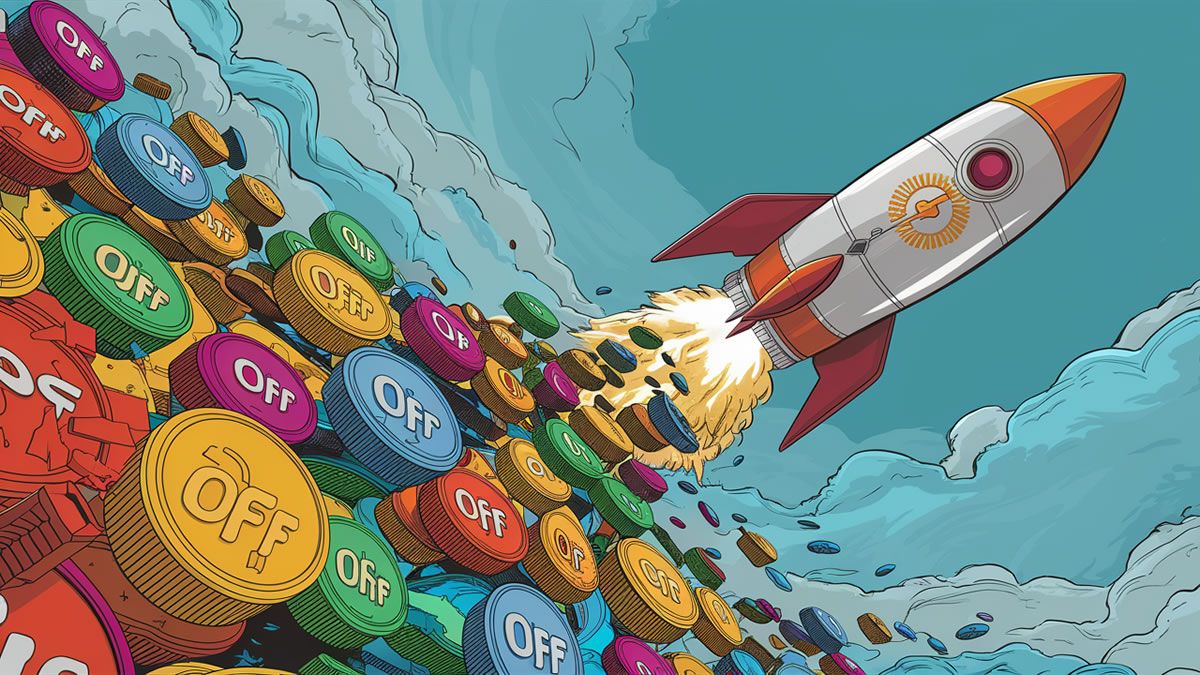How to avoid the risks of cryptocurrency yield farms
CryptoPress
Crypto Yield Farms have the potential to be an excellent method to make passive income; but, investing in them is not without its associated dangers.
What is Yield Farming?
Yield farming is a means for any digital asset or cryptocurrency owner to earn passive income as incentives or interest. Depending on whatever crypto farm services you use, your deposit interest may be constant or fluctuate over time.
Yield farming requires “Liquidity Providers” and a “Liquidity pool” (decentralized smart contracts containing pooled funds). After that, users may contribute money to liquidity pools that other users can purchase, sell, or borrow from.
Defi protocols pay users for investing money every so often. Users may reinvest tokens they’ve been given to earn bigger rewards and compounding interest.
Your return is proportional to your initial outlay. As well as DEFI’s APY. Your reward will earn you more money if you compound it in the same liquidity pool or transfer it to one with a greater rate.
Risks of yield farming
There are general risks associated with all methods of making money in DeFi, as well as dangers associated with particular forms of farming.
General risks:
Protocol hacking and asset theft
Hackers often take advantage to steal investment money by finding backdoors in the source code and then move assets from the smart contract liquidity providers to your wallet. Unlike CEX exchanges, decentralized platforms are unable to prevent this or reverse the protocol.
Volatility
The price of a cryptocurrency can fluctuate by tens of percentage points in a few hours. In a year, $100 invested can yield $10,000 or $1. This depends on many other variables: the development of the platform, market trends, competition, and even random others.
To limit the risks of volatility, it is advisable to make good risk management, with diversification and rebalancing of portfolios.
Private risks:
Loan liquidation
Those who take or deliver loans with cryptocurrencies are subject to this type of danger. When the interest rate reaches a certain threshold, the loan is liquidated and the collateral is handed over to the lender. The loan-to-value ratio is used to assess the settlement amount (not to be confused with LTV).
The higher the loan-to-value ratio, the higher the probability of liquidation of the collateral. For example, you collateralized a USDT loan using BTC currency. If the price of Bitcoin falls below a certain threshold, the creditor will take the collateral.
Impermanent losses
This risk affects liquidity providers on DEX exchanges. When the exchange rate of one of the two cryptocurrencies in a pair fluctuates dramatically, sporadic losses occur due to high volatility. If the holder withdraws assets from the liquidity funds at that time, the losses will become permanent.
What are the advantages of yield farming?
- High yield
- Even with stablecoins, you can earn at least a high annual APR.
- The annual return (APY) exceeds the return on bank deposits, which barely exceeds or sometimes falls below the inflation rate.
How to choose a high-yield farm?
Yield farming is a high-risk, high-reward venture for investors. If investors do their homework, the upside might bring them great returns over time.
Choosing the best yield farming depends on your budget, time, and risk tolerance. Consider monitoring performance, the rate, how simple it is to use, the annual percentage yield (APY), short-term and long-term incentives, transaction and gas expenses, and temporary loss.
DYOR
Before you commit large amounts of cryptocurrency to a new farm, do your own research (DYOR) on the team’s background. If they have been involved in other projects, check out their previous work and make sure it is reputable. Additionally, it is important to look at the whitepaper to see what type of farm you will be investing in.
We will start with the most important one: you need to know that the team members are genuine and have experience in growing crypto yield farms.
The second rule is that you need to check if the team has at least one member who has experience in cryptocurrency trading. This helps to ensure that they understand how markets work and what kind of investments are likely to be successful in the future. However, we also recommend checking their background as well as their previous projects.
Ask yourself:
Who is managing this farm?
Are they qualified and experienced? Do they have a history of success? Do they have a proven track record that speaks to their ability to manage a successful crypto farm?
What is their plan for growth? How will they grow their crypto portfolio over time? What are their strategies for managing risk, both in terms of investment risk and operational risk (i.e., security)?
Other general rules
There are also some other general rules for evaluating farms.
Ask yourself:
1. Is there a working product? If not, why not? Have they completed an ICO before? If so, how well did it do?
2. What type of token is being offered? Is it utility or security? What does this mean for investors?
• Be wary of farms that claim to have generated millions of profit in a short period of time; these are usually scams designed to take advantage of inexperienced investors who don’t know how much effort is required to grow a business like this successfully.
• Look for farms that offer transparency about their financials; some will even offer full audits so that you can see exactly where your money is going and how it’s being spent by the company.
Generally speaking, indicators of a healthy liquidity pool include:
- The greater the farm’s Total Value Locked (TVL), the more secure it is.
- The longer the liquidity pool has been, the more secure it becomes.
- The greater the number of protocols built above the liquidity pool, the safer it is.
- The more staking pairs, the safer it is.
- High APYs indicate that the liquidity pool is relatively young and there are fewer participants to divide the pool’s rewards.
Cover: Shipwreck – Universal public domain.
© 2024 Cryptopress. For informational purposes only, not offered as advice of any kind.
Latest Content
- On April 24, the $RTF Token from Oleksandr Usyk’s READY TO FIGHT Project Will be Listed on WhiteBIT
- Crypto Market Update: Key Trends and Insights for April 22, 2024
- NAGA’s Shareholders Approve the Merger With CAPEX.com With a Positive Vote of 99.81%
- Bitcoin Network Fees Soar as Runes Launch Nears
- Crypto Market Update: April 19, 2024
Related
- Top Yield Farms on Polygon Here are Polygon's greatest Yield Farms for mining or earn passive earnings....
- Lowest Cost Bitcoin-Linked ETF to Launch on November 16: VanEck Bitcoin Strategy ETF (XBTF) Lowest Cost Bitcoin-Linked ETF to Launch on November 16: VanEck Bitcoin Strategy ETF (XBTF)...
- New narrative: What is “Real Yield Defi”? "Real yield" protocol means putting your faith in its capacity to maintain its value over time....
- Transform DeFi Yield with Vesper Earn: Deposit One Digital Asset and Earn Yield in Another DeFi Pulse Index (DPI), and DAI, Vesper Earn unlocks new possibilities by allowing users to earn stablecoin yield from their cryptocurrency holdings and vice versa....




